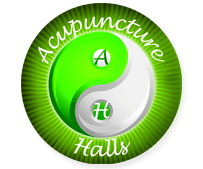
Photo credit to freepik.com
Acupuncture is a comprehensive therapy that can be used to treat a variety of disorders, both psychological and physiological. Acupuncture, which was once considered a part of traditional Chinese medicine, has recently gained popularity, and qualified acupuncturists may now be found practicing it all over the world. It is reported to be useful at relieving sciatica and has resulted in considerable good patient outcomes.
Let us first define sciatica before discussing the direct relationship between sciatica and acupuncture, as well as how it works and its benefits.
What is Sciatica?
Sciatica is pain in the sciatic nerve caused by an injury or inflammation. It radiates down each leg along the course of the sciatic nerve, which runs from your lower back to your hips and buttocks. Sciatica usually affects only one side of the body.
The sciatic nerve is the body’s longest nerve. The sciatic nerve in the lower back can also be compressed by bone spurs and spinal stenosis (narrowing). When this occurs, it can lead to several issues all the way down the nerve.
Depending on the origin of sciatica pain, people describe it in a variety of ways. Sharp, shooting, or jolting pain is how some people describe the discomfort. The pain has been described as “scorching,” “electric,” and “stabbing” by others. The discomfort may be permanent or intermittent.
Risk Factors
You’re more likely to get sciatica if you.
- Have a current or recent injury
- Overweight
- Normal aging
- Have a physically demanding job
- Lack a strong core
- Prolonged sitting
- In the weight room, you don’t have proper posture
- Have diabetes
- Have osteoarthritis
- Smoking
What are the Symptoms of Sciatica?
- Pain in the lower back, buttocks, and down your leg that ranges from moderate to severe.
- Lower back, buttocks, leg, or foot numbness or weakness.
- Pain that gets worse with movement; inability to move.
- Feeling pins and needles in your legs, toes, or foot.
- Constipation and urinary incontinence (due to cauda equina).
How to Prevent Sciatica
Sciatica is not always possible to prevent, and it can come back at any time. The following tips can help you protect your back.
- Exercise on a regular basis.
- When you’re sitting, be sure your posture is correct.
- Make use of proper body mechanics.
- Taking proper supplements to prevent inflammation.
Acupuncture Can Treat Sciatica
Spinal manipulation and acupuncture, according to a study published in the BMJ journal, are non-opioid drugs or treatments that have demonstrated promising effects. Acupuncture is thought to stimulate the central nervous system, resulting in the release of chemicals into the muscles, brain, and spinal cord.
Acupuncture has been demonstrated to be a successful treatment for sciatica without the negative side effects associated with prescription pain relievers. It is also a non-surgical, safe therapeutic option for sciatica pain relief.
A comprehensive study of acupuncture for sciatica indicated that it was more effective than non-steroidal anti-inflammatory drug (NSAID) treatment in alleviating sciatica symptoms. Acupuncture also enhances the effectiveness of drugs that may be recommended for sciatica, allowing the dosage to be reduced and adverse effects to be reduced.
How Does Acupuncture for Sciatica Works?
Acupuncture relieves pain by relaxing stiff muscles, increasing blood flow, regulating the neurological system, and releasing neurotransmitters.
Acupuncture works by inserting fine, specialized needles into specific bodily sites to cause the nervous system to respond. It increases the release of natural painkillers (enkephalins and endorphins) in the brain, improves blood circulation to the painful spot, and relaxes the muscles in the surrounding area.
By stimulating the acupoints in your lower back and leg, it reduces muscle tension, improves blood circulation and brings endorphins in the affected area; thus, helping the body to heal.
According to the study, acupuncture had an overall efficacy rate of 81.6 percent for relieving sciatica pain and restoring normal function as a stand-alone therapy.
Benefits of Acupuncture for Sciatica
Because acupuncture is intimately linked to the nerve system, studies suggest that it may aid in the relief of stress, headaches, and migraines. It provides relief from back pain and sciatica by:
- Promoting the release of vascular and immunomodulatory substances to reduce inflammation.
- Endorphins and other neurohumoral factors are released when nerves in the body are stimulated, specifically in muscles and other tissues. It also alters the way the brain and spinal cord deal with pain.
- Serotonin and noradrenaline levels are increased, which helps to alleviate pain and speed up nerve healing.
- Increased local microcirculation helps disseminate or disperse swelling by improving muscle stiffness and joint mobility.
- Promoting sciatic nerve regeneration.
- Increasing the speed at which electromagnetic signals are relayed, allowing pain-killing chemicals to flow more quickly.
- Natural opioids are released, which aid relieve pain and promote sleep.
Acupuncture Halls understands how sciatica can influence one’s quality of life. This is why we are committed to offering patients with effective, personalized treatment plans in a comfortable setting. We are eager to serve and assist you in achieving your goals.
Patients in San Juan Capistrano, San Clemente, and Dana Point that are suffering from painful sciatica can turn to Acupuncture Halls for high-quality acupuncture services. Our clinic’s licensed acupuncturist, Dr. Martha E. Hall DAOM, ACN, provides efficient acupuncture therapy with faster outcomes and patient-centered services.
